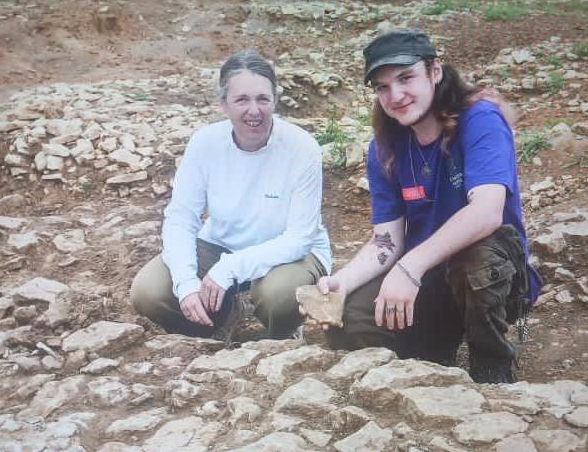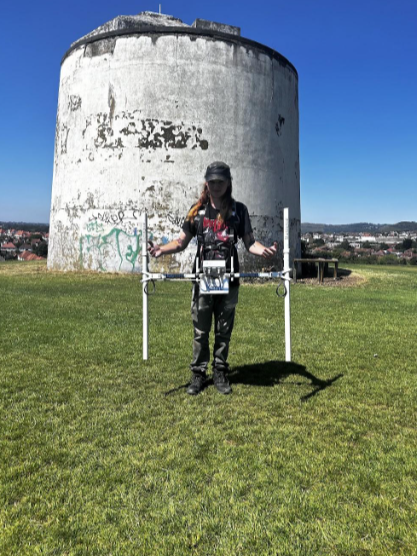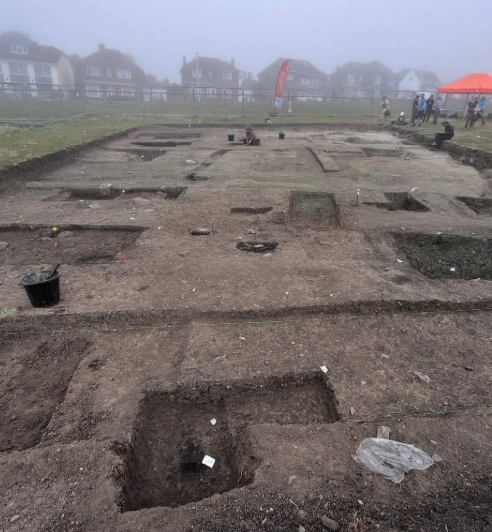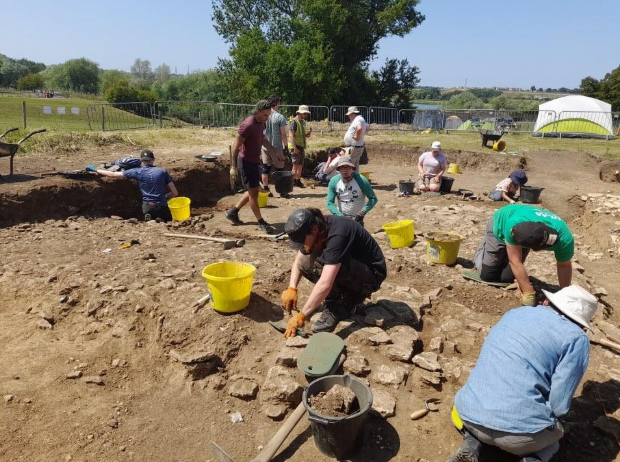Anthropology student joins excavations projects in the UK
In June and July 2025, Cam Crooks, who is pursuing dual degrees in Anthropology and History, joined two archaeology field schools in the UK. With the financial support of LSU Honors College, LSU Career Center, and the Benjamin A. Gilman Scholarship Program, Cam participated in the Irchester Field School ran by the University of Leicester and Northamptonshire's Archaeological Resource Centre where they helped excavate the outer suburb of the small Roman town as part of the Irchester (Northamptonshire) project.
LSU student Cam Crooks (front center in black) excavating Roman age
architectural features at the Irchester Field School, Northamptonshire, UK. Photo credit: Cam Crooks.
Cam helped clear and record Roman structures and deposits, assisted in environmental processing techniques utilizing flotation equipment, assisted in sorting through a Roman coin hoard of 2,000 coins while also engaging with the public teaching osteology, providing tours during the Northamptonshire Roman Festival, and assisting supervising children digging with the Young Archaeologists Club.

LSU student Cam Crooks (right) providing tours of the Roman site during the Northamptonshire
Roman
Fest with a volunteer. Irchester Field School, Northamptonshire, UK. Photo credit: Cam Crooks.
Cam then participated in the East Wear Bay (Kent) project with the Canterbury Archaeological Trust and the University of Kent where they assisted in excavating Iron Age remains near a Roman villa that has been facing coastal erosion and destruction due to its location along the cliffs. Cam used a total station to record finds and plot grids along the site in addition to using magnetometry and moisture resistivity surveys to collect geophysical data along the cliffs for future excavation plans.

LSU student Cam Crooks completing a magnetometry survey of the area where a Bronze
age burrow was
located before the Napoleonic Martello tower was built. East Wear Bay Field School,
Folkestone, Kent UK. Photo credit: Cam Crooks.
The field experience will be foundational in Cam’s capstone (honors) thesis which, under the supervision of G&A faculty David Chicoine and in collaboration with archaeologists at the University of Leicester and Northamptonshire’s Archaeological Resource Centre, will analyze femur remains from Northamptonshire dating from the Iron Age through to the Medieval era to understand potential changes in the quality of life and health of people.

Iron Age exposed during the excavations carried out by members of the East Wear
Bay Field School, Folkestone, Kent UK. Photo credit: Cam Crooks.
Cam’s research interests are in bioarchaeology, paleoproteometry, aDNA, stable isotope analysis, public engagement, and the use of archaeology to contextualize modern human issues. Cam is currently a student worker at the LSU Paleoclimatology and Anthropology Studies Lab and is starting to volunteer at the LSU Museum of Natural Science Archaeological and Ethnographic Collections. Before these roles, Cam was a Supplemental Instruction Leader of history at LSU. Cam is slated to graduate in December 2025 and plans to apply to the Fulbright program and various graduate programs in bioarchaeology to continue their education.
Congratulations to Cam and all the team members for their productive and insightful excavations!
